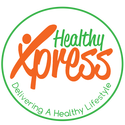
Aging gracefully is the best thing that can happen to you. Though it doesn’t always happen naturally, you need to take a few precautions; dietary and physical exercises help you achieve a certain shape and form. Let’s understand how to eat healthy and stay fit in your 50s and 60s.
Turning 50 is exciting, it is like a milestone for many people. It is also the time when your body changes drastically and so giving emphasis on its nutritional needs becomes all the more important. By maintaining a healthy diet, you can improve your physical and mental health as well as achieve an active lifestyle. Read on to understand the basics of healthy eating in your 50s and 60s.
Healthy aging
Though aging is a natural process, you may take adequate steps to age healthily. If your main goal is to live an active lifestyle well in your late adulthood give special emphasis on the following;
- Healthy diet
- Exercise or physical activity
- Regular health check-ups and observing medical history (including heart disease, type 2 diabetes, cancer, and mental decline)
- Surrounding yourself with active groups and social circle
- Avoiding habits like smoking and consumption of any harmful substance
- Having access to quality medical care
Nutrition plays a key role in healthy aging by reducing the risk of several chronic diseases, or conditions like weakened bones, malnutrition, skin aging, weight issues, and so on.
Healthy aging encompasses extending the number of active and healthy years to your life. Although there are several factors at play, following an overall nutritious eating pattern that you may include in your healthy meal plan can certainly help you achieve the nutrition goal.
During your 50s and 60s, you must get enough of key vitamins and nutrients daily like;
Protein
High protein food items include:
- beans and lentils
- fish
- eggs
- lean meat
- poultry
- tofu or cottage cheese (you may also go for a Lactose-Free Diet if required)
- seeds and nuts
- dairy products (unless you are allergic to them)
As per the experts, your recommended daily dose for someone who weighs around 150 pounds (68 kg) might need 75–135 grams of protein per day.
Fiber
Eating enough fiber content in your healthy meal plan promotes bowel movements and digestion, as well as supports heart health, lowers blood sugar levels, and helps maintain healthy body weight.
High fiber food items include:
- fruits
- vegetables
- whole-grain items such as oats, barley, brown rice, popcorn, etc.
- nuts and seeds
- beans and lentils
As per studies, the RDA (Recommended Daily Allowance) for fiber is 25 and 38 grams per day for women and men, respectively. If you understand how to eat healthy then more than half of your job towards an active lifestyle is done!
Calcium
Calcium is very important for bone health, heart and muscle contraction as well as nerve functions.
High calcium food items include:
- leafy greens
- dairy products such as milk, cheese, and yogurt
Vitamins
Vitamin B12 and Vitamin D are the most important vitamins required for your body to function well, especially in the age group of the 50s and 60s.
Omega 3 fatty acids
Fish is the best source of natural omega 3 fatty acids. Nuts and seeds are also helpful.
You may want to consult your dietitian or doctor before making any major changes in your diet and exercise though, make sure to include the above ingredients adequately in your healthy meal plan to achieve a fit and healthy body.

